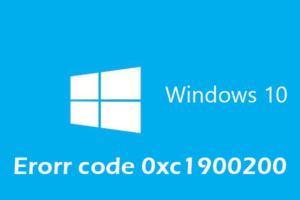-
Table of Contents
“Windows 7: Breaking the cycle of repetitive updates.”
Windows 7 Keeps Installing Same Updates Over And Over is a common issue faced by users of the Windows 7 operating system. This problem occurs when the system repeatedly attempts to install the same updates, resulting in a never-ending update loop. In this article, we will explore the possible causes of this issue and provide potential solutions to resolve it.
Common Causes of Windows 7 Installing Same Updates Repeatedly
Windows 7, a widely used operating system, has been known to encounter a frustrating issue where it repeatedly installs the same updates. This can be a perplexing problem for users, as it not only wastes time but also raises concerns about the stability and security of the system. In this article, we will delve into the common causes behind this issue and explore potential solutions.
One of the primary reasons for Windows 7 installing the same updates repeatedly is a glitch in the Windows Update service. This service is responsible for delivering updates to the operating system, ensuring that it remains up to date with the latest security patches and bug fixes. However, sometimes this service can become stuck in a loop, causing it to repeatedly attempt to install the same updates.
Another possible cause is a corrupted update file. When an update file becomes corrupted during the download or installation process, Windows 7 may fail to recognize that the update has already been installed. As a result, it will continue to attempt to install the update, leading to a never-ending cycle.
Furthermore, conflicts between different updates can also contribute to this issue. Windows 7 relies on a complex system of dependencies, where certain updates must be installed before others can be applied. If there is a conflict between two updates, Windows 7 may repeatedly attempt to install them in an attempt to resolve the conflict, resulting in a frustrating cycle of failed installations.
Additionally, certain third-party software or security programs can interfere with the Windows Update process, causing it to malfunction. These programs may block or modify the update files, preventing Windows 7 from recognizing that the updates have already been installed. Consequently, the system will continue to install the same updates repeatedly.
To address this issue, there are several potential solutions that users can try. Firstly, restarting the Windows Update service can often resolve the problem. This can be done by opening the Services application, locating the Windows Update service, and selecting the restart option. This will refresh the service and may resolve any glitches that were causing the repeated installations.
If the issue persists, users can try resetting the Windows Update components. This can be done by running a series of commands in the Command Prompt, which will reset the Windows Update service and clear any corrupted files. This process may take some time, but it can often resolve the issue and prevent further repeated installations.
In some cases, disabling third-party software or security programs temporarily can also help. By doing so, users can determine if these programs are causing conflicts with the Windows Update process. If the repeated installations cease after disabling the software, it may be necessary to update or reconfigure the program to ensure compatibility with Windows 7.
In conclusion, the issue of Windows 7 repeatedly installing the same updates can be frustrating and time-consuming. However, by understanding the common causes behind this problem and implementing the appropriate solutions, users can resolve the issue and ensure that their operating system remains stable and secure. Whether it is a glitch in the Windows Update service, a corrupted update file, conflicts between updates, or interference from third-party software, there are steps that can be taken to address the issue and prevent further repeated installations.
How to Fix Windows 7 Repeatedly Installing the Same Updates
Windows 7 Keeps Installing Same Updates Over And Over
If you are a Windows 7 user, you may have encountered a frustrating issue where the same updates keep installing repeatedly. This can be a time-consuming and annoying problem, as it not only wastes your time but also affects the performance of your computer. In this article, we will explore the possible causes of this issue and provide you with some effective solutions to fix it.
One of the main reasons why Windows 7 keeps installing the same updates over and over is a corrupted update file. When an update file becomes corrupted, Windows fails to recognize it as installed and attempts to install it again. This can create a loop where the same update is repeatedly installed, causing frustration for the user.
To fix this issue, you can try deleting the corrupted update file and then reinstalling it. To do this, you need to access the Windows Update folder on your computer. You can find this folder by navigating to C:WindowsSoftwareDistributionDownload. Once you are in the folder, delete all the files and folders within it. After deleting the files, restart your computer and check if the issue is resolved. If not, you may need to try other solutions.
Another possible cause of this issue is a problem with the Windows Update service. The Windows Update service is responsible for managing and installing updates on your computer. If this service is not functioning properly, it can lead to the repeated installation of the same updates.
To fix this issue, you can try restarting the Windows Update service. To do this, open the Run dialog box by pressing the Windows key + R on your keyboard. In the Run dialog box, type “services.msc” and press Enter. This will open the Services window. Scroll down and locate the Windows Update service. Right-click on it and select Restart. After restarting the service, check if the issue is resolved.
If the above solutions do not work, you can try using the Windows Update Troubleshooter. The Windows Update Troubleshooter is a built-in tool in Windows 7 that can help identify and fix issues with Windows Update. To access the troubleshooter, go to the Control Panel and search for “troubleshoot” in the search bar. Click on the “Troubleshooting” option and then select “Fix problems with Windows Update” under the System and Security section. Follow the on-screen instructions to run the troubleshooter and fix any issues it detects.
In some cases, the repeated installation of the same updates may be caused by a problem with the Windows Update cache. The Windows Update cache is a temporary storage location for update files. If this cache becomes corrupted, it can lead to the installation of the same updates over and over.
To fix this issue, you can try clearing the Windows Update cache. To do this, open the Command Prompt as an administrator. Type the following commands one by one and press Enter after each command:
net stop wuauserv
net stop cryptSvc
net stop bits
net stop msiserver
ren C:WindowsSoftwareDistribution SoftwareDistribution.old
ren C:WindowsSystem32catroot2 catroot2.old
net start wuauserv
net start cryptSvc
net start bits
net start msiserver
After running these commands, restart your computer and check if the issue is resolved.
In conclusion, the repeated installation of the same updates in Windows 7 can be a frustrating issue. However, by following the solutions mentioned in this article, you can effectively fix this problem and ensure that your computer runs smoothly without wasting time on unnecessary updates.
Troubleshooting Steps for Windows 7 Update Loop Issue
Windows 7 Keeps Installing Same Updates Over And Over
Windows 7 is a widely used operating system that has been around for many years. While it is generally reliable and stable, there are times when users may encounter issues with the Windows Update feature. One common problem that users have reported is Windows 7 continuously installing the same updates over and over again, creating a frustrating update loop. In this article, we will discuss some troubleshooting steps to help resolve this issue.
The first step in troubleshooting this problem is to check for any pending updates. Sometimes, Windows 7 may get stuck in a loop if there are updates that have not been fully installed. To do this, go to the Control Panel and open the Windows Update section. Click on “Check for updates” and wait for the system to scan for any pending updates. If there are any, make sure to install them and restart the computer.
If there are no pending updates, the next step is to reset the Windows Update components. Over time, these components can become corrupted, leading to issues with the update process. To reset the Windows Update components, open the Command Prompt as an administrator and type the following commands one by one: “net stop wuauserv,” “net stop cryptSvc,” “net stop bits,” and “net stop msiserver.” After running these commands, type “ren C:WindowsSoftwareDistribution SoftwareDistribution.old” and “ren C:WindowsSystem32catroot2 catroot2.old” to rename the SoftwareDistribution and catroot2 folders. Finally, restart the Windows Update service by typing “net start wuauserv” in the Command Prompt.
If resetting the Windows Update components does not resolve the issue, the next step is to run the Windows Update Troubleshooter. This built-in tool can automatically detect and fix common problems with the Windows Update feature. To access the Windows Update Troubleshooter, go to the Control Panel and open the Troubleshooting section. Under the System and Security category, click on “Fix problems with Windows Update.” Follow the on-screen instructions to complete the troubleshooting process.
In some cases, the issue may be caused by a specific update that is not installing correctly. To identify and resolve this problem, you can try manually installing the problematic update. To do this, go to the Microsoft Update Catalog website and search for the update by its KB number. Download the update file that matches your system architecture (32-bit or 64-bit) and run the installer. If the update fails to install, you may need to uninstall any previous versions of the update before trying again.
If none of the above steps resolve the issue, it may be necessary to perform a system restore. This will revert your computer back to a previous state, undoing any changes that may have caused the update loop. To perform a system restore, go to the Control Panel and open the System section. Click on “System Protection” and then “System Restore.” Follow the on-screen instructions to choose a restore point and initiate the restoration process.
In conclusion, encountering an update loop in Windows 7 can be frustrating, but there are several troubleshooting steps that can help resolve the issue. By checking for pending updates, resetting the Windows Update components, running the Windows Update Troubleshooter, manually installing problematic updates, or performing a system restore, users can overcome this problem and ensure that their Windows 7 operating system stays up to date.
Preventing Windows 7 from Installing the Same Updates Over and Over
Windows 7 Keeps Installing Same Updates Over And Over
Windows 7 is a widely used operating system that has been around for quite some time. While it is a reliable and stable platform, some users have reported an issue where the same updates keep getting installed over and over again. This can be frustrating and time-consuming, as it not only wastes valuable system resources but also interrupts the user’s workflow. In this article, we will explore some preventive measures to stop Windows 7 from installing the same updates repeatedly.
One of the main reasons why Windows 7 may keep installing the same updates is due to a corrupted update file. When an update file becomes corrupted, the system fails to recognize that the update has already been installed, leading to a continuous loop of installation attempts. To address this issue, it is recommended to clear the Windows Update cache. This can be done by following these steps:
1. Press the Windows key + R to open the Run dialog box.
2. Type “services.msc” and press Enter to open the Services window.
3. Scroll down and locate the “Windows Update” service.
4. Right-click on it and select “Stop” to temporarily disable the service.
5. Open File Explorer and navigate to the following directory: C:WindowsSoftwareDistribution.
6. Delete all the files and folders within the SoftwareDistribution folder.
7. Go back to the Services window, right-click on the “Windows Update” service, and select “Start” to enable the service again.
Clearing the Windows Update cache should resolve any issues related to corrupted update files and prevent Windows 7 from installing the same updates repeatedly.
Another possible cause for this issue is a misconfiguration in the Windows Update settings. To check and adjust these settings, follow these steps:
1. Press the Windows key + R to open the Run dialog box.
2. Type “control” and press Enter to open the Control Panel.
3. In the Control Panel, select “System and Security” and then click on “Windows Update.”
4. Click on the “Change settings” link on the left-hand side of the window.
5. Ensure that the “Install updates automatically” option is selected.
6. Under the “Important updates” section, choose either “Install updates automatically” or “Download updates but let me choose whether to install them.”
7. Click on “OK” to save the changes.
By verifying and adjusting the Windows Update settings, you can ensure that Windows 7 installs updates correctly and does not get stuck in a loop of installing the same updates repeatedly.
In some cases, the issue may be caused by a faulty update itself. Microsoft occasionally releases updates that contain bugs or compatibility issues, which can lead to installation problems. To prevent Windows 7 from repeatedly installing a faulty update, you can temporarily hide it. Here’s how:
1. Open the Control Panel and navigate to “System and Security” and then click on “Windows Update.”
2. Click on the “View update history” link on the left-hand side of the window.
3. Locate the update that keeps getting installed repeatedly and right-click on it.
4. Select “Hide update” from the context menu.
Hiding the faulty update will prevent Windows 7 from attempting to install it again and again, saving you from the frustration of constant update notifications.
In conclusion, if you find that Windows 7 keeps installing the same updates over and over again, it is essential to take preventive measures to address the issue. Clearing the Windows Update cache, adjusting the Windows Update settings, and hiding faulty updates are effective ways to prevent this problem. By following these steps, you can ensure that your Windows 7 system functions smoothly and efficiently without being stuck in an endless loop of installing the same updates repeatedly.
Q&A
1. Why does Windows 7 keep installing the same updates repeatedly?
This issue can occur due to various reasons, such as corrupted update files, incorrect update settings, or conflicts with other software.
2. How can I stop Windows 7 from repeatedly installing the same updates?
You can try several solutions, including running the Windows Update Troubleshooter, resetting the Windows Update components, or manually installing the updates from the Microsoft Update Catalog.
3. Will disabling Windows Update prevent the repeated installation of updates?
Disabling Windows Update is not recommended as it can leave your system vulnerable to security risks. It is better to address the underlying issue causing the repeated installations.
4. Should I consider upgrading to a newer version of Windows to resolve this issue?
Upgrading to a newer version of Windows, such as Windows 10, is a long-term solution as Windows 7 is no longer supported. However, it is advisable to first try troubleshooting steps to resolve the repeated update installation issue.In conclusion, if Windows 7 keeps installing the same updates repeatedly, it may indicate an issue with the update process or a specific update. Troubleshooting steps such as running the Windows Update Troubleshooter, resetting Windows Update components, or manually installing the problematic update can help resolve this issue.







![[Solved]: “Error Code 0xC004F050” in Windows 11 in No Time](https://www.tipsbin.net/wp-content/uploads/2023/08/8e64f519d2390bfc001a41744be2cbd4-300x199.jpeg)

